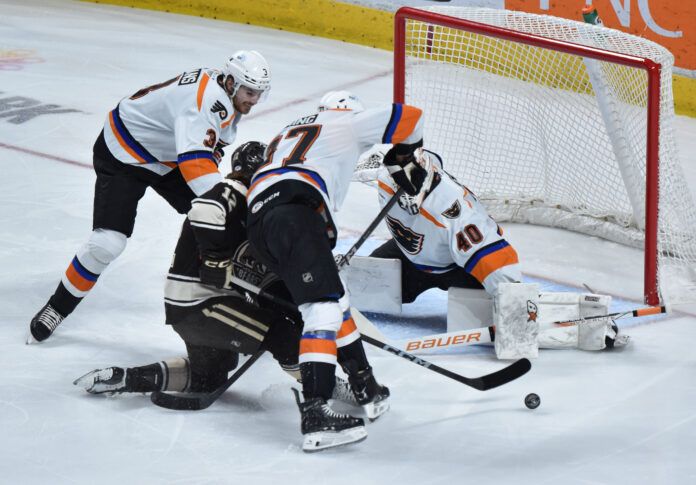Trying to make sense of AHL odds and lines? You’re not alone. The American Hockey League has its own rhythm, and the numbers around it can feel confusing. However, once you grasp the basics and focus on the key signals, things start to fall into place. You don’t need a stats degree—just a clear understanding of how it all works.
Sunday, May 11, 2025, the Hershey Bears vs the LV Phantoms during the Calder Cup Championship Play Off. The Bears beat the Phantoms by a score of 4-2. The Bears move on to meet the Charlotte Checkers. Photo credit: [email protected]
Odds and lines in the AHL reflect more than records or wins. They pull from small details: how tired a team is, who’s in the net, or if the lineup changed that morning. Get familiar with those details, and you’re already ahead of the curve.
What Influences AHL Odds and Lines
Unlike some leagues, the AHL shifts quickly. One player call-up can flip expectations. A back-to-back road trip? That changes everything. The odds move in real time, adjusting to things many people miss.
For example, goalie rotations in the AHL aren’t always announced early. But once confirmed, they impact how lines shift. The same goes for scratches and injury news. Staying on top of these details is what separates guesswork from insight. You can track live AHL odds and lines to notice patterns forming in real time. Don’t just look at movement—connect it to what’s happening behind the scenes. That’s how you gain an edge.
Simple Signs That Matter Most
There’s a lot of noise in the numbers. But a few signs show up again and again. Learn to spot them early, and you’ll start to see how odds are shaped in the AHL world.
- Lineup changes: Missing top skaters or goalies can swing momentum.
- Travel fatigue: Long road trips wear teams down.
- Young lineups: AHL squads can be heavy on prospects—they’re talented but streaky.
Even one of these can explain a sudden shift in the line. And when two or more overlap, that’s where value tends to appear. You don’t need to overanalyze—just stay alert.
Habits That Help You Stay Ahead
Getting familiar with AHL odds and lines isn’t a one-time thing. It’s about consistency. A few habits can help you stay in the loop without overcomplicating things.
- Watch morning updates: Most team news drops before noon. Set alerts.
- Track 3-4 teams closely: You’ll start noticing patterns that others miss.
- Keep weekly notes: Jot down changes in odds, final scores, and who played.
These small habits stack up. Over time, you get a feel for how lines react. That’s where confidence comes from—not from guessing, but from learning what affects the flow.
The Role of Context in the AHL
Context is everything in hockey. Especially in a league like the AHL, where roster changes are daily business. If you just look at numbers without the story behind them, you miss the full picture.
Lines shift for reasons. And the reasons are often tied to real-world hockey conditions: who’s tired, who’s heating up, who just got sent down from the NHL. When you put numbers into that frame, they start to make sense.
The good news? You don’t need to track every game. Just pick a few teams, keep an eye on news, and read the odds through that lens. AHL odds and lines become much easier to understand when you look at them this way.























